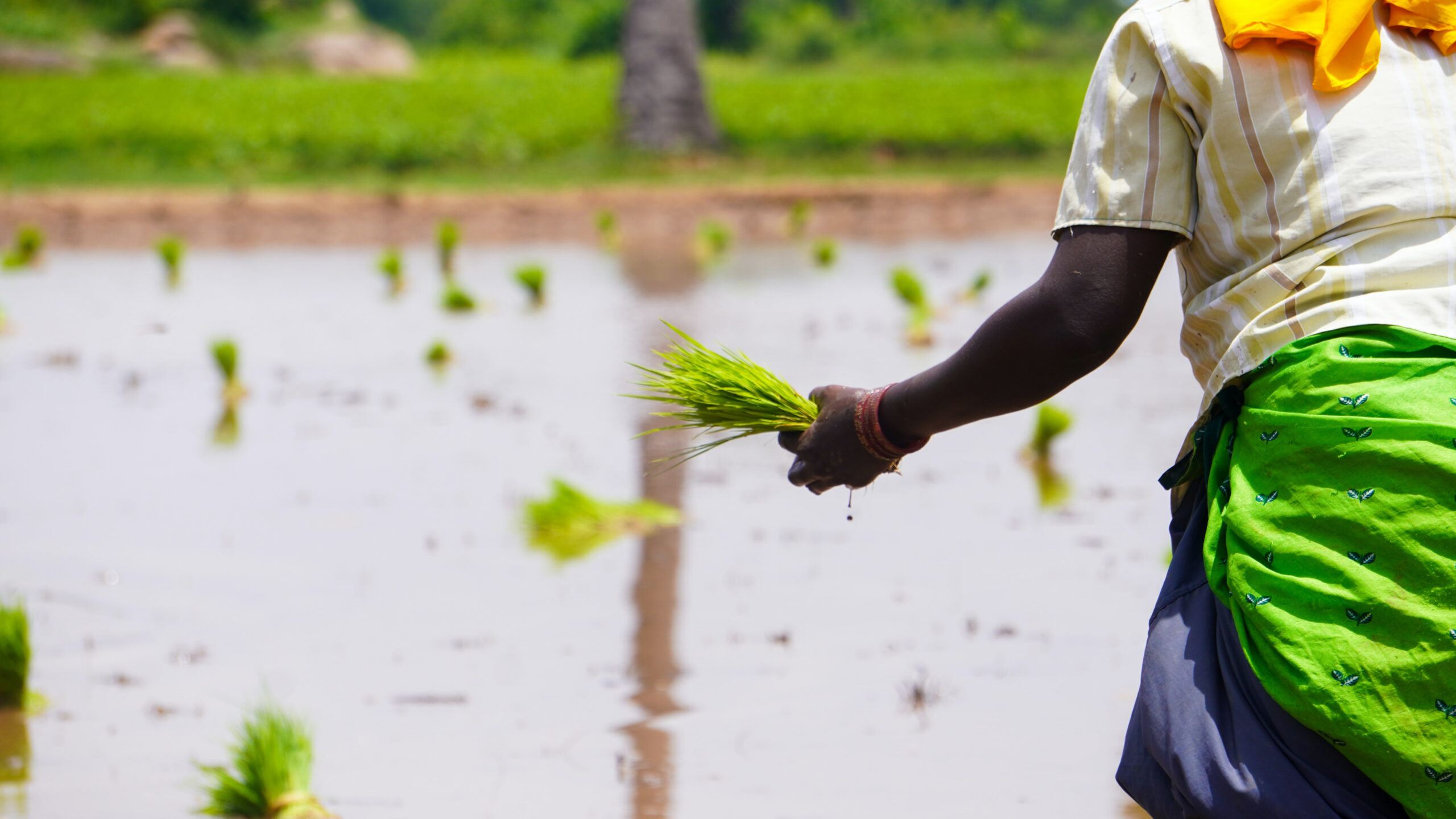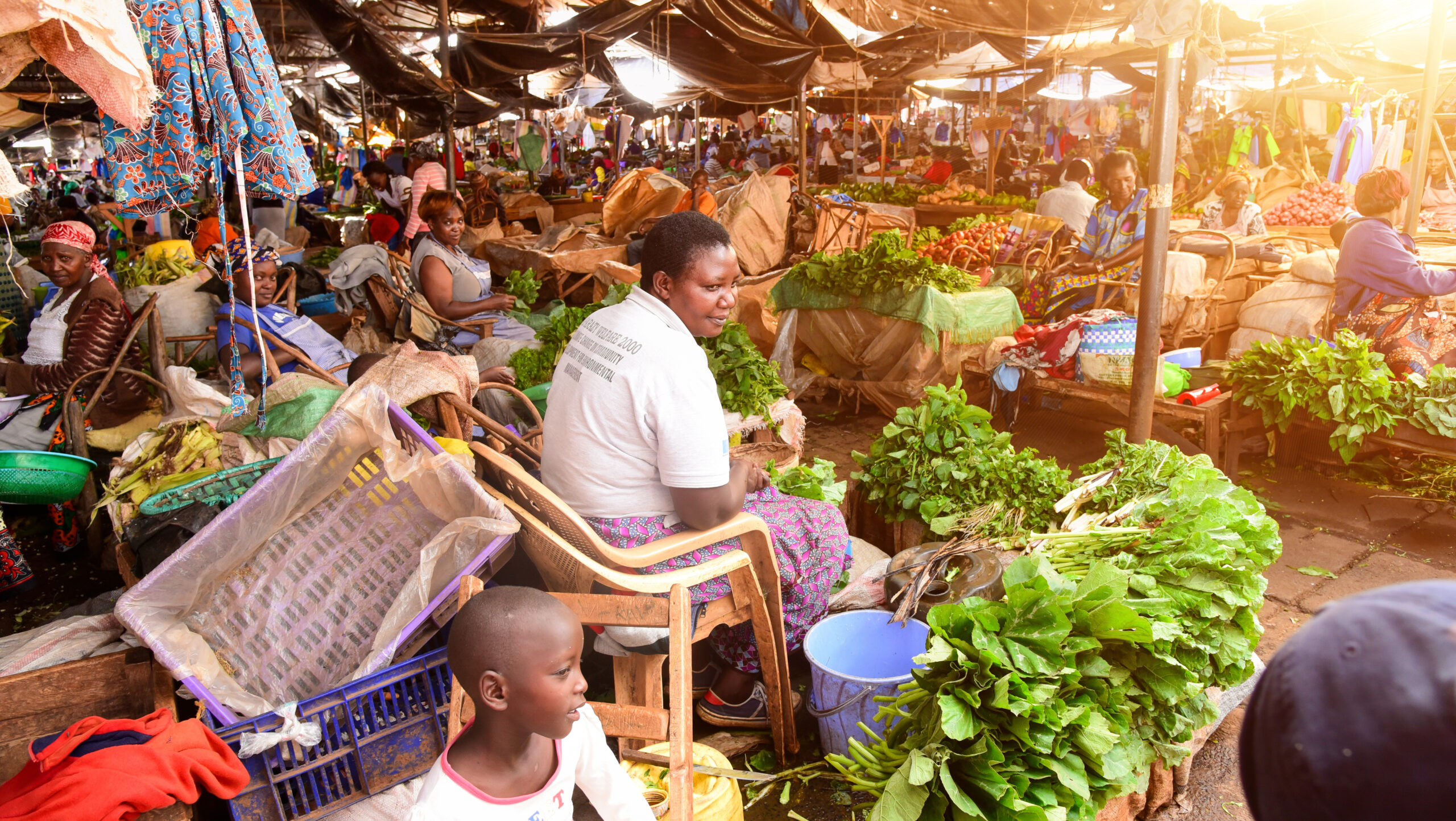Over the past two months, India has removed several of its restrictions affecting rice exports, some in place since September 2022. This is welcome news for rice importing countries, which for the past year have had to seek alternative suppliers at significantly elevated prices.
This post—following up on previous assessments of the situation from July 2024, February 2024, October 2023, and July 2023—summarizes recent actions, examines recent trade trends, and evaluates the impact of the restrictions on importing countries of Africa, a region that typically receives over half of India’s rice exports. It also briefly examines the impact of the export restrictions on domestic rice prices in India.
Status of India rice trade restrictions
Through much of 2022, markets for wheat, maize, and oilseeds were seeing record high prices following the Russian invasion of Ukraine, yet the rice market was generally calm. Large global supplies and the lack of any direct supply shock related to the Ukraine conflict left rice relatively immune to the price spikes seen with other commodities. But rice prices began to rise in late 2022, due in part to widespread flooding in Pakistan and growing concerns in South and Southeast Asia that forecasts of a strong El Niño in 2023 would lead to drought and sharply reduce rice crops.
Partly in response to higher global rice prices, the Indian government implemented a number of trade restrictions in September 2022 aimed at keeping domestic supplies high and prices down. These included additional export duties on unhusked rice (both white and brown), additional duties on non-basmati white rice (excluding parboiled rice), and a ban on broken rice exports (Table 1). Twelve months later, with rising food inflation and the Modi government facing general elections in spring 2024, further restrictions were placed on rice exports including an export ban on non-basmati white rice (excluding parboiled rice), a 20% duty on parboiled rice, and a minimum export price (MEP) for basmati rice.
Table 1
Thankfully, the impact of the 2023-2024 El Niño event was less than feared. With a better-than-expected 2023/24 rice crop and rice inventories rising, the Indian government faced increasing pressure to relax the export restrictions. In September 2024, it eliminated the ban on non-basmati (excluding parboiled) rice, replacing it with an MEP of $490 per metric ton (MT). Export duties on parboiled rice were reduced from 20% to 10%. In October, the MEPs for both basmati and non-basmati rice were eliminated, along with export duties for parboiled rice and unhusked brown and white rice. Only the ban on broken rice remains (for which India has made allowances for neighboring countries and many developing countries in sub-Saharan Africa).
Trade impacts
Although many countries produce and consume rice, relatively little of it is traded compared to other cereals. India comprises a large share of traded rice, meaning Indian export restrictions can have a major impact on the global rice trade, including supplies and prices.
From September 2023 to August 2024, India exported 14.3 million MT of rice (Figure 1), a decline of about one-third from the 21.3 million MT exported over the same period a year earlier. Exports of non-basmati white rice (excluding parboiled rice) were down 5.4 million MT (a decline of 87%), while exports of broken rice were down 775,000 MT (a decline of almost 57%). Higher export duties on parboiled rice exports contributed to a 1.7 million MT decline in parboiled rice exports over the same 12-month period, a decline of 20%. By contrast, the basmati rice MEP had a negligible impact on sales. From September 2023 to August 2024, basmati exports rose 885,000 MT compared to a year earlier, an increase of 18%.
Figure 1
Prior to the recent restrictions, roughly half of India’s rice exports went to Africa. In 2022, Africa accounted for 65% of India’s non-basmati white rice (excluding parboiled) exports and 75% of parboiled rice exports (Figure 2). In 2022, Indian rice accounted for more than 60% of rice imports for 17 African countries and more than 80% in nine of these. Africa is typically a large market for broken rice—accounting for over 80% of India’s exports over 2018-2020. That number fell in 2021 and 2022 as China and other countries imported broken rice as a cheap substitute for high-price maize (then at record price levels following the Russian invasion of Ukraine). Very little basmati rice is exported to Africa (about 5% in 2022).
Figure 2
So it’s not surprising that globally, India’s rice restrictions affected African countries the most (Figure 3). From September 2022 to August 2023, India rice exports to Africa fell 5.3 million MT—43%—compared to the prior year—or 75% of the overall global decline in India rice exports. India exports to Asia were down 2.6 million MT (-20%) while exports to Oceania, Europe, and the Latin America and the Caribbean (LAC) region were down a combined 240,000 MT (-27%). India exports to North America, dominated by basmati rice varieties, saw a slight increase of 65,000 MT (+19.4%) over the same period.
Figure 3
Impacts on rice prices
Rice prices, as measured by the Thai white rice price (5% broken), averaged $615 per MT from July 27, 2023 to September 29, 2024, the period during which the bulk of the export restrictions were in place (Figure 4). This was an increase of about 20% over levels just prior to the announcement of the restrictions. With the recent rollbacks, rice prices on global markets have fallen sharply back to pre-restriction levels.
Figure 4
Local rice prices in selected countries in South Asia and West Africa show the impact of the rice restrictions (Figures 5 and 6). The data for retail rice prices are not current enough to reflect the impacts of India’s recent actions, but rice prices appear to be declining in West Africa, and traders anticipate further declines as India begins to export more rice.
Figure 5
Figure 6
A thorough assessment of the impact of India’s rice restrictions on African consumers is beyond the focus of this post, but from the available data we can make a back-of-the-envelope estimate.
During the period the rice export restrictions were in place, rice prices were about $100 per MT higher than prices before the ban was in place. Estimates from USDA PS&D database suggest that rice consumption in sub-Saharan Africa is 38 million MT in 2023/24, unchanged from 2022/23 levels. Valued at world prices, this suggests rice consumers in sub-Saharan Africa paid an additional $3.8 billion.
Did export restrictions account for all of the global rice price increases? Prices had been trending upward prior to India’s actions and concerns over El Niño would have lingered into 2024, until more was known about the size of rice crops in South and Southeast Asia. But clearly, India’s trade measures had an immediate market impact when they went into effect; arguably rice prices have been kept artificially high by India’s maintaining those restrictions through the first nine months of 2024.
The impact of the trade restrictions on Indian consumers is even more difficult to assess. Retail rice prices in India continued to rise throughout much of 2023, then started to flatten in early 2024 (Figure 7). They began to fall in June 2024, and the most recent data show that prices remain about 10% above the levels just prior to implementation of the restrictions. While the government imposed the measures in the name of assuring supplies and price stability for the Indian population, what happened suggests that export restrictions are a rather blunt instrument to address retail prices, since much of the retail price is dependent on post-farm gate costs (transportation, energy and labor costs).
Figure 7
Conclusion
India’s latest actions removing export restrictions on rice are welcome news for global rice consumers, particularly those who have historically sourced rice from India. Those actions increased costs for many consumers, particularly those in rice-importing countries of sub-Saharan Africa. Meanwhile, the benefits for Indian consumers were at best unclear, as retail rice prices in India remained high throughout the period. If reducing inflation were the goal, the evidence suggests that export restrictions are a relatively ineffective tool, in addition to their more detrimental impact in global markets.
Joseph Glauber is a Senior Research Fellow with IFPRI's Markets, Trade, and Institutions (MTI) Unit; Abdullah Mamun is an MTI Senior Research Analyst. Opinions are the authors'.







